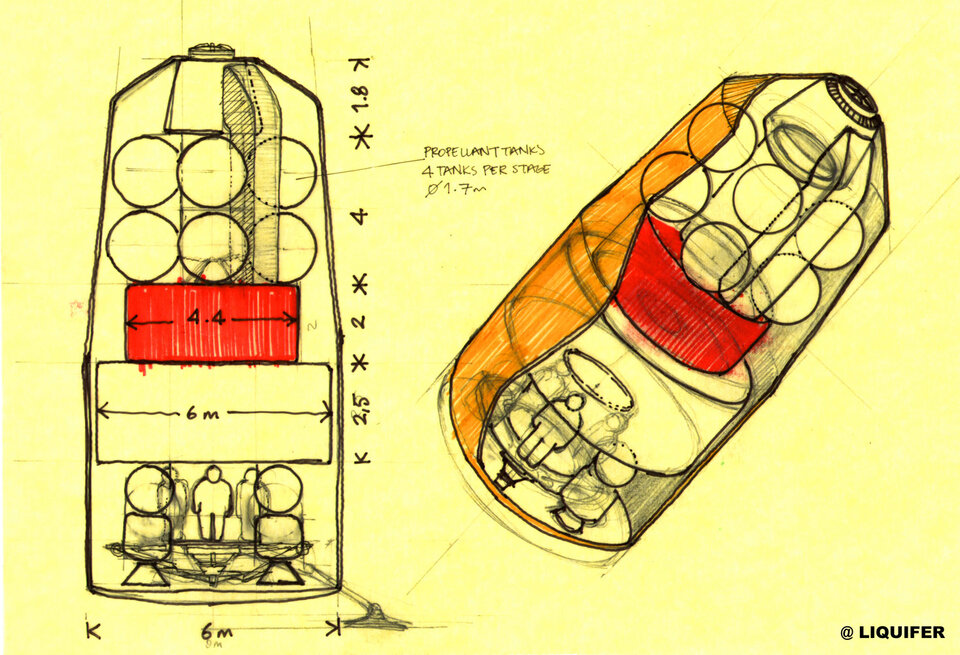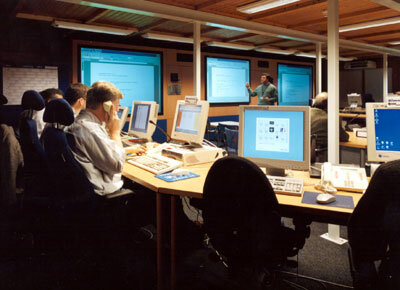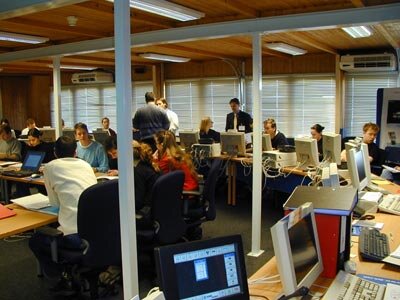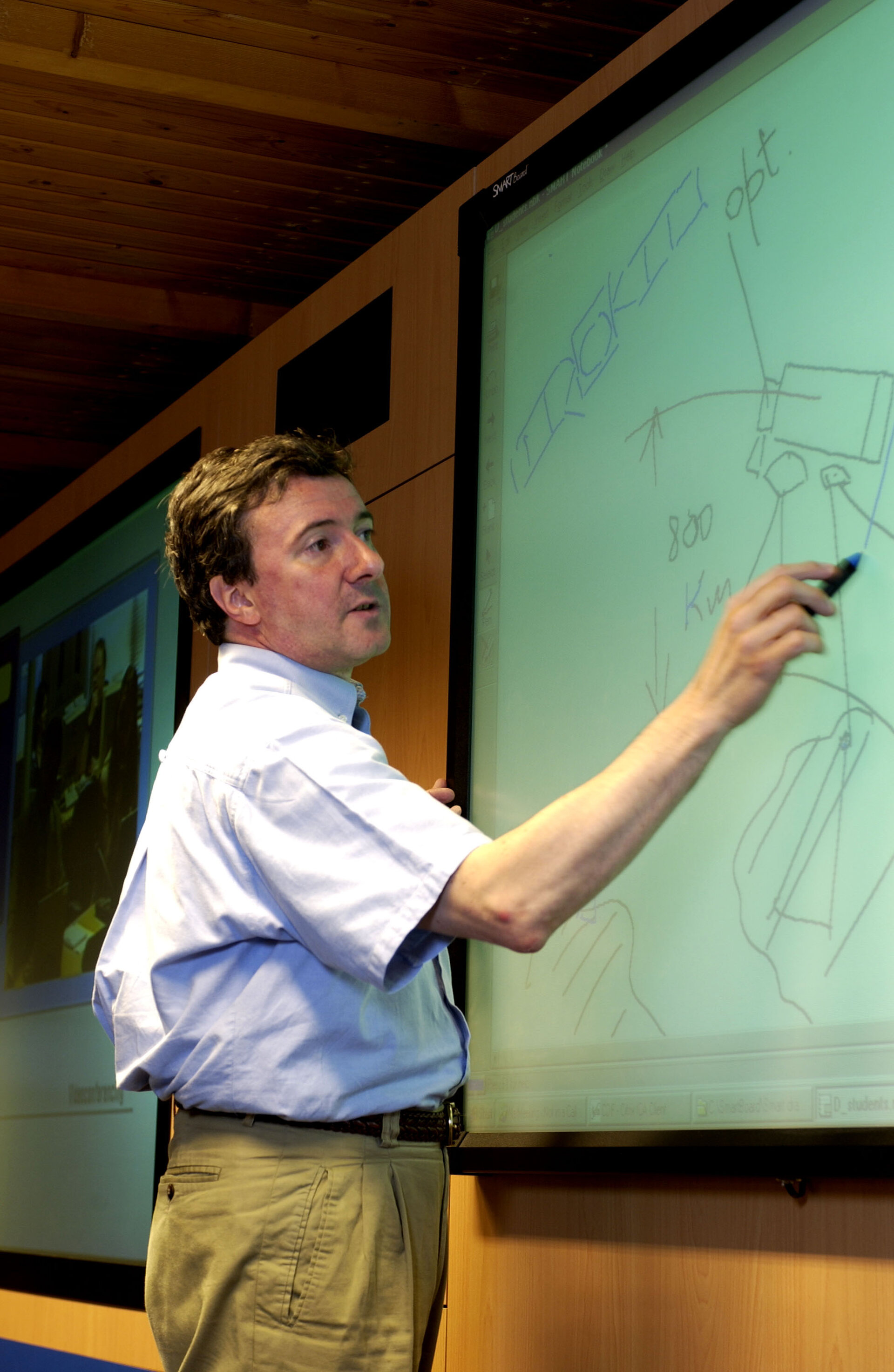Interview with Massimo Bandecchi
What role does the CDF play in ESA?
The Concurrent Design Facility (CDF) represents a new approach to carrying out internal interdisciplinary assessments (known as pre-phase A) of future missions. We have always performed these activities in the Agency, but with this new engineers tool we can do the same job in a more effective way and in a shorter time.
It has also had the effect of bringing the user community (e.g. scientists) closer to the engineering world because they work together in the same room, with the same tools and communication systems. This allows them to communicate in a much more effective way.
Recently, the CDF has become a reference point for other European partners in the application of this new approach and methodology to mission and space system design and development.
Can you explain how the process of Pre-Phase A fits into the overall life-cycle of a mission?

Pre-Phase A is a conceptual phase; it comes at the very beginning of a potential new project, which might not be pursued. Pre-Phase A commences as a consequence of some ideas that a group of users, for instance the scientific community, might have to create a new mission, because there are some requirements, needs or requests to study that mission. So we do this internal assessment in order to establish the feasibility of the mission and the implications in financial and programmatic terms. One of the purposes of this is to understand whether the feasibility is connected to some new technology that needs developed. The results are provided to the decision-making bodies in order to decide if that mission is worth pursuing.
If the mission is accepted, a new project is started and the results of our work and the output of CDF are provided to industry as an input to the definition phase, which is Phase A. So, Pre-Phase A should be sufficiently detailed to make the decision of whether the mission is worthwhile or not. On the other hand only 10-15% of what we study becomes a project and goes to an industrial phase. So we have to perform the study accurately enough to make a decision but not invest too much time because most of what we study will not become a project, however, all the results are kept for future utilisation.
You are one of the founders of the CDF, what inspired you to create it?

When we decided to create something similar to what today is known as the CDF, we already had some experience of the concurrent engineering approach for the assessment of future studies. At that time the setup was created for a specific study or mission and would be maintained only until the end of the activity.
The idea of the CDF was to make a permanent facility available for different programmes and types of mission in order to assess the advantages and benefits that the Concurrent Engineering approach would bring to the Agency. The CDF represents something that is evolving and becoming more and more efficient because it capitalises on each study that is performed.
The implementation of a permanent facility is justified if the investment is compensated by a cost saving or an increase in quality. It also depends on the volume of activities performed each year. In our case a minimum of five studies per year was required to justify the cost of a permanent facility. Today, we are performing over 15 studies a year, all with a very high standard of quality.
What makes the work performed in CDF more attractive?
Concurrent Engineering (CE) means working in a team rather than individually.
What we have done with CDF is reproduce all the workstations and engineering tools from the labs and offices and connect them all together in order to work collectively. The same complex engineering tools that used to run on mainframes are now running on a laptop, so the concept of bringing your tools and working together is a more affordable one.
The approach works well because people appreciate the teamwork and like to be part of an end-to-end process. Finally, what we see is that each engineer works more at system level and no longer solely within their specific domain. So, we can say that the CDF contributes to increase system awareness.
The approach is more demanding on each of the engineers, because we ask them to work all together in real-time at the pace dictated by the team and not at the pace you might expect if you worked individually. They have to perform four tasks at the same time; the design of their subsystem, the presentation of what they propose, review of the other disciplines and finally to document their work online.
Our experience is that all CDF team members have confirmed their appreciation and have asked to come back to perform new studies.
What message are you giving to the future engineers?

We are regularly invited to give lectures at technical universities in the various European countries and in particular at the International Space University in Strasbourg each year. We explain first of all what the principles of concurrent engineering are and which elements the CDF is based on and the advantages of using such a methodology. We also give examples of achievements we have had using the Concurrent Engineering approach.
This is the first of a series of interviews in which Massimo Bandecchi, founder of ESA's Concurrent Design Facility at ESTEC (NL), talks about the role of the CDF and its value for ESA.


